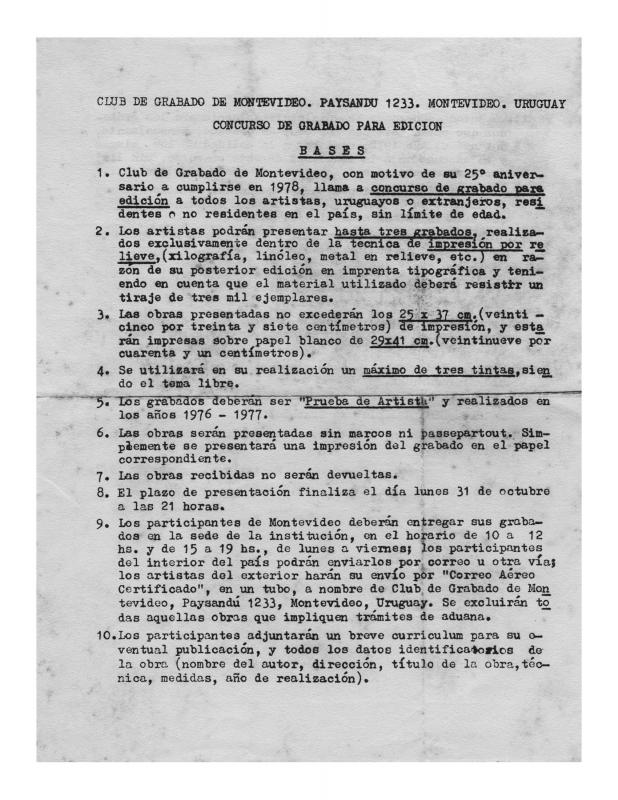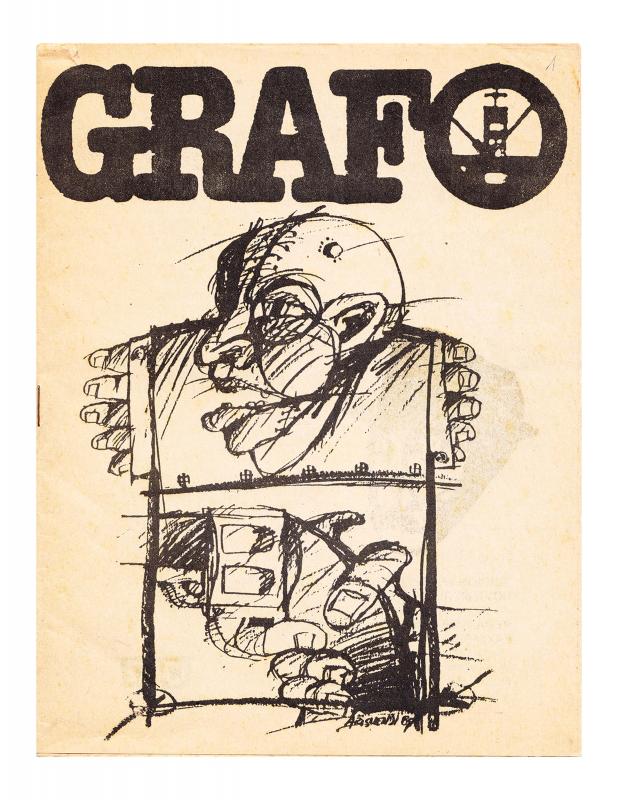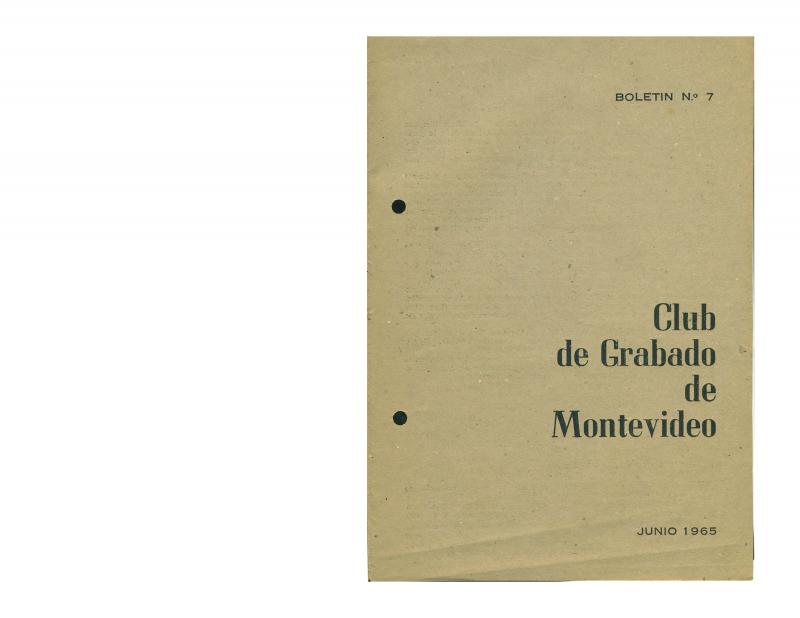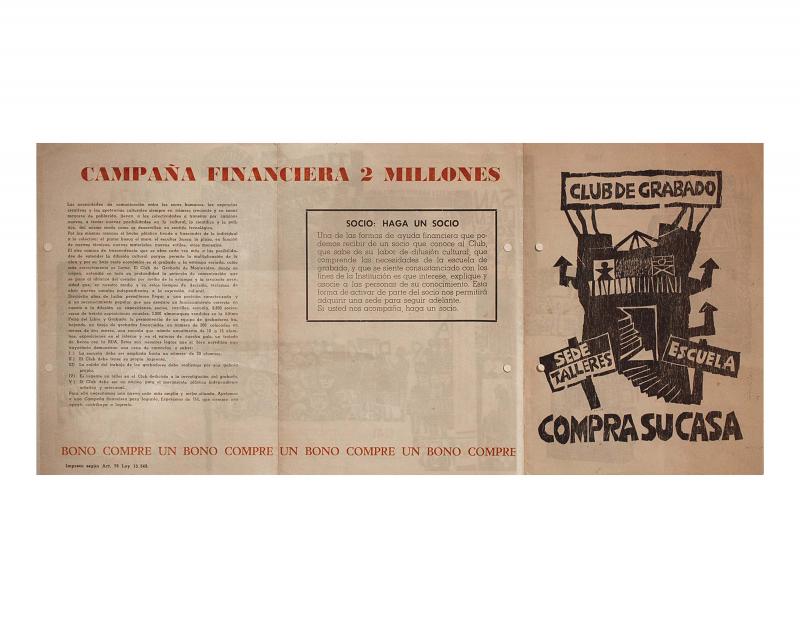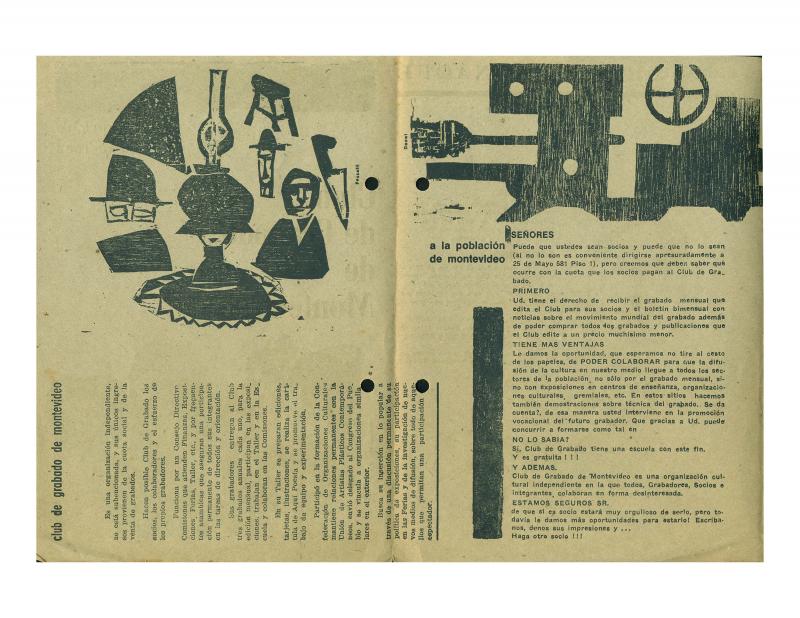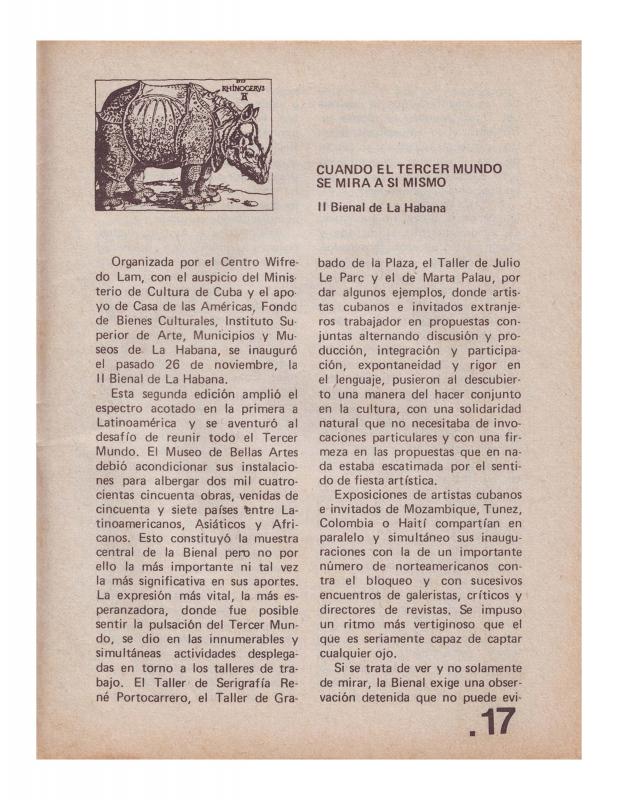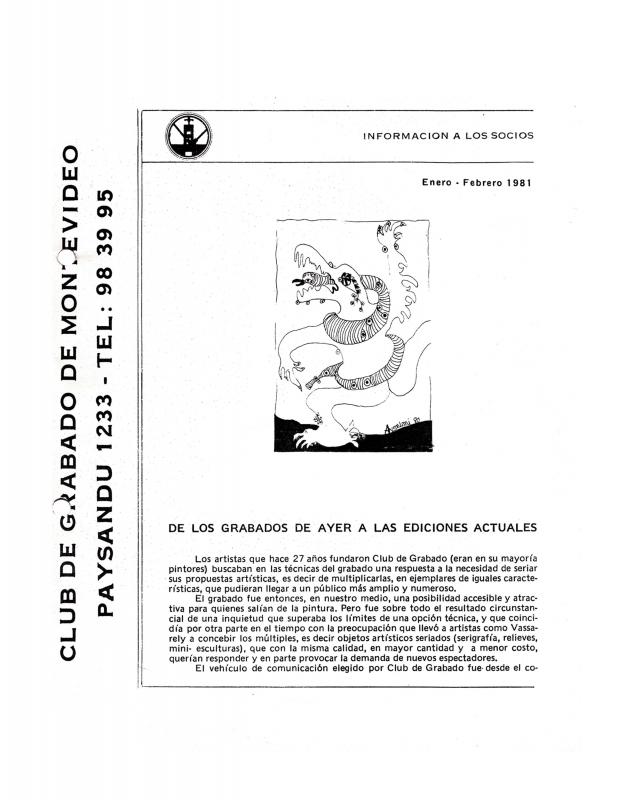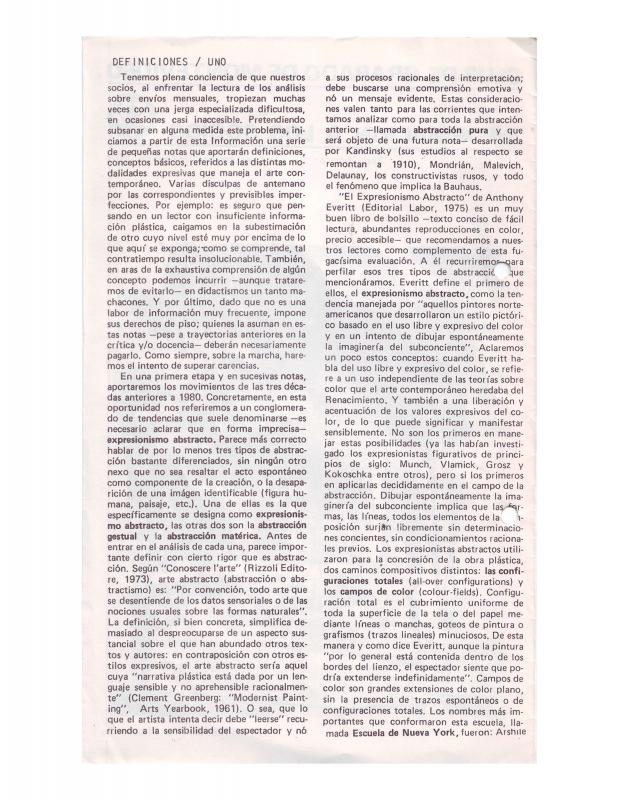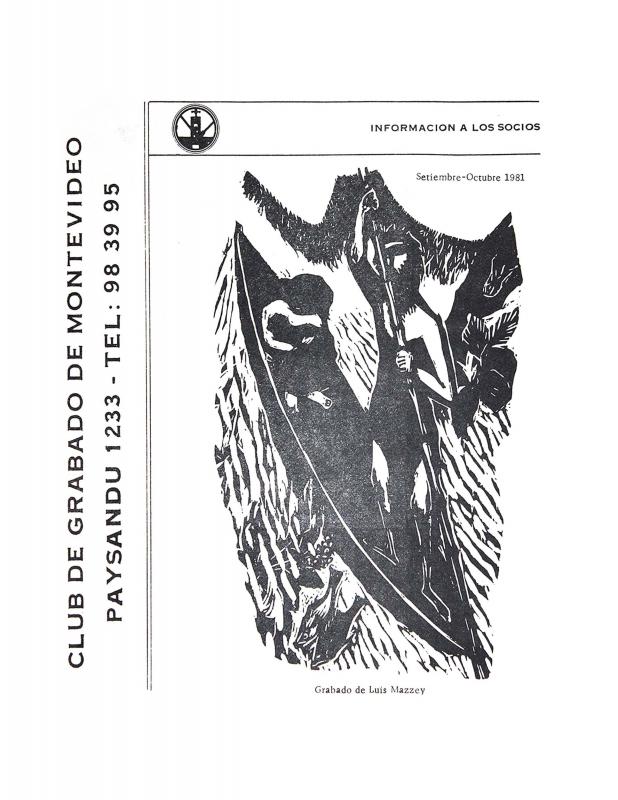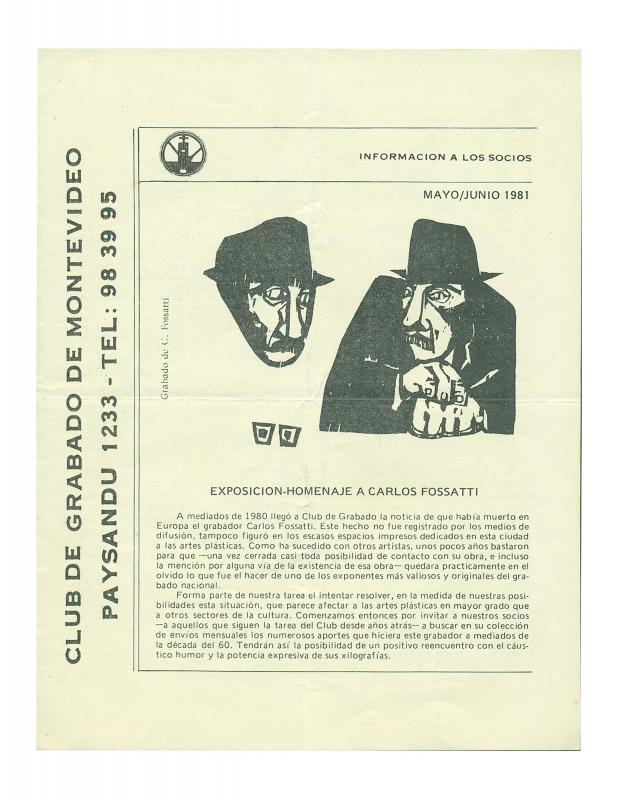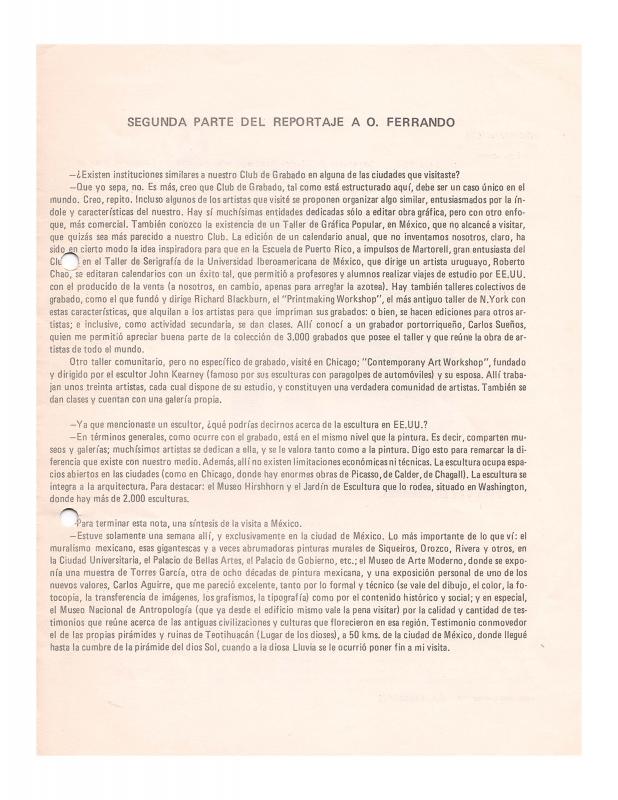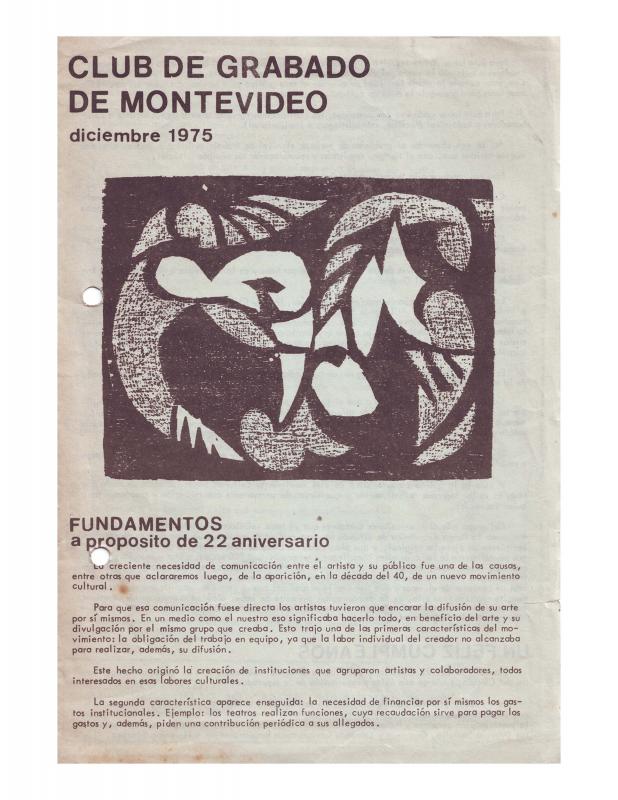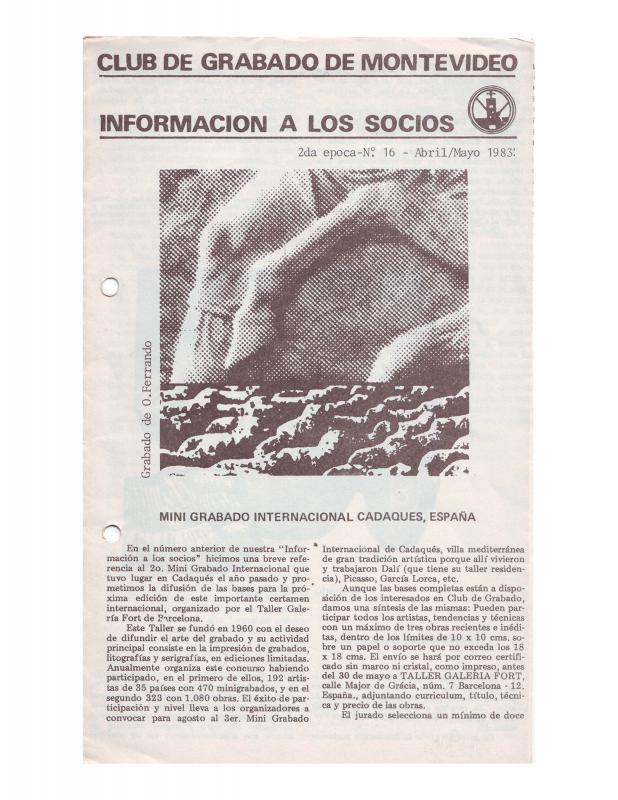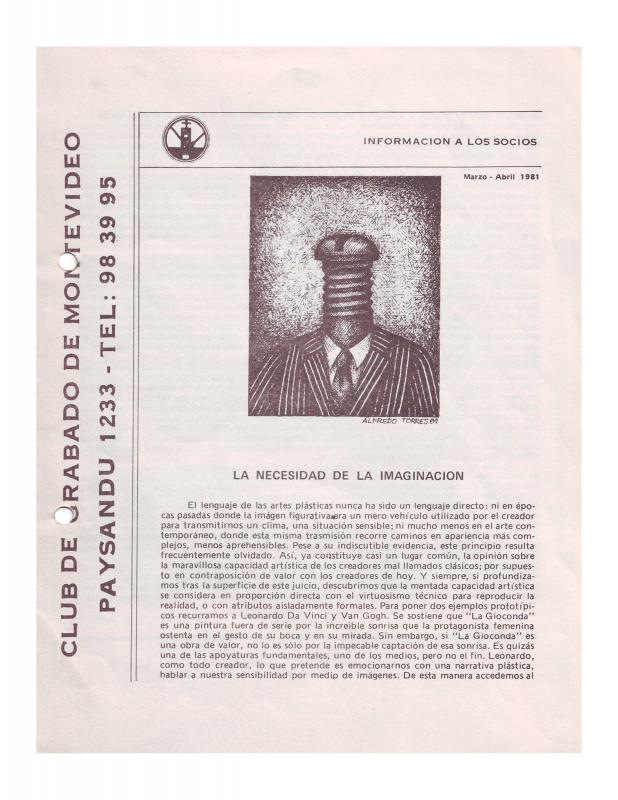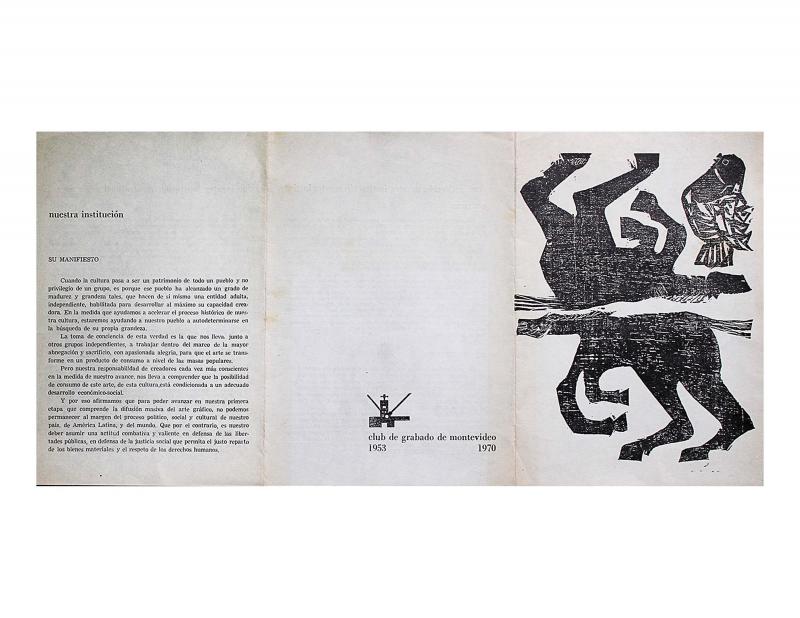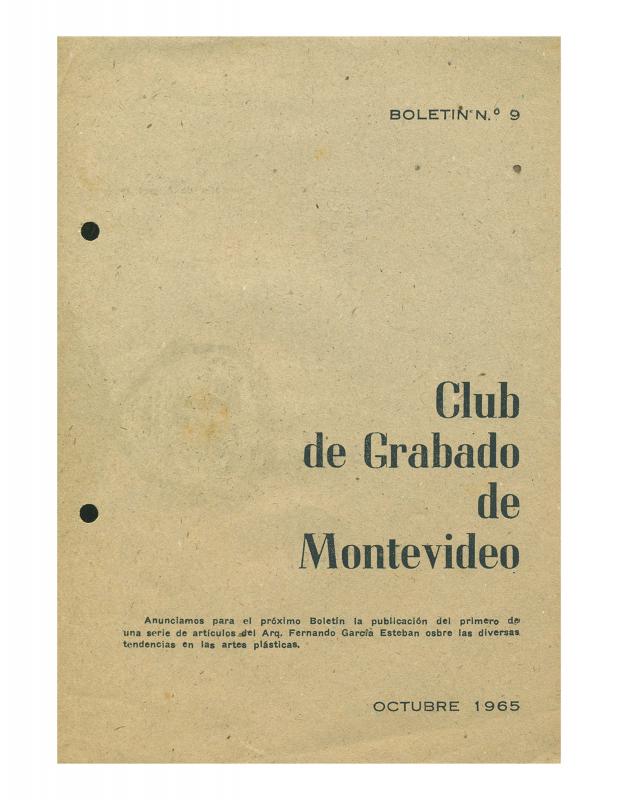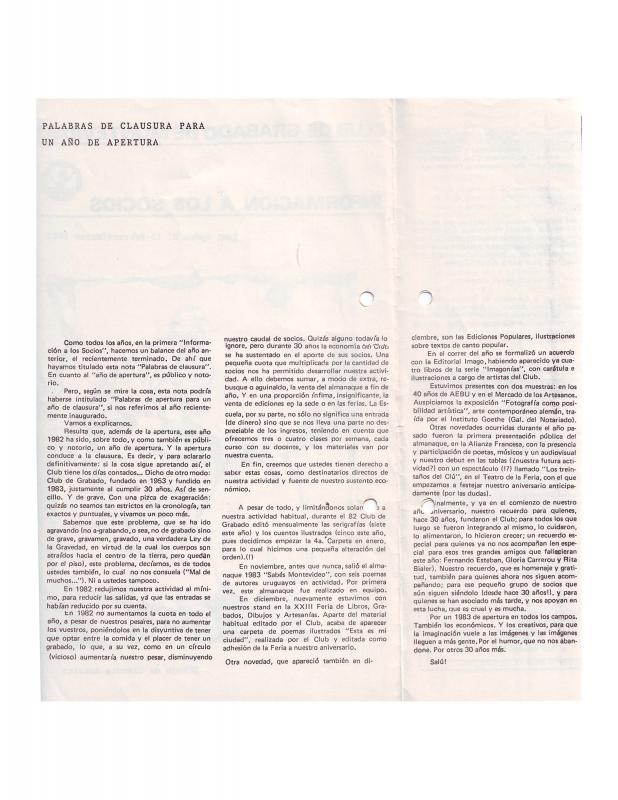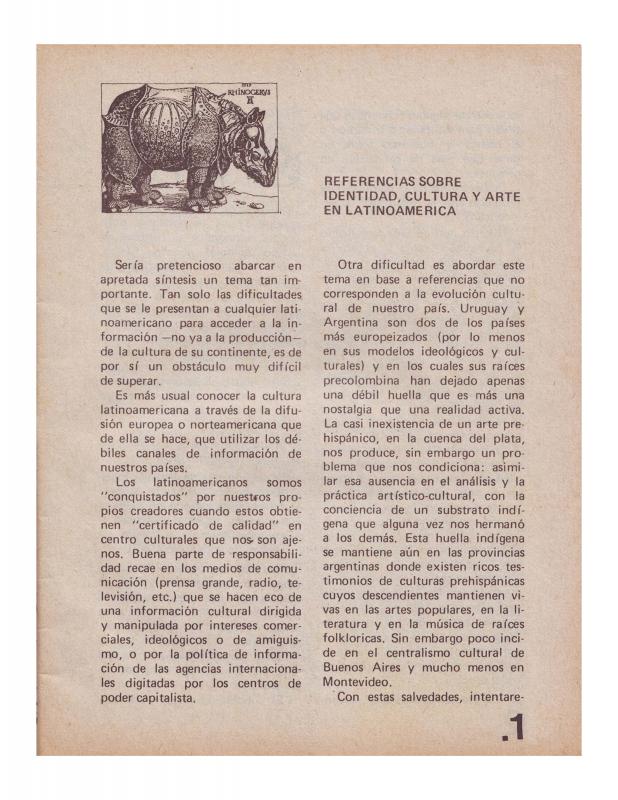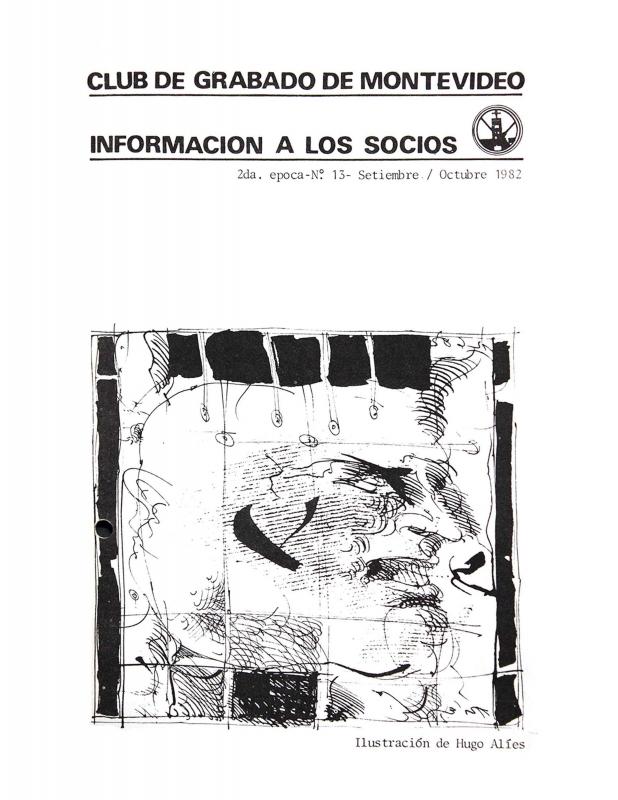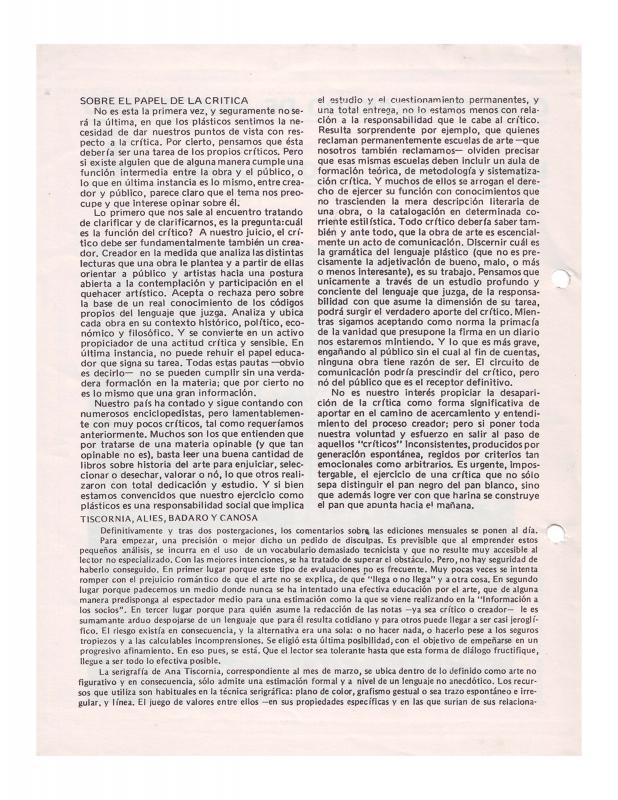This issue of the Boletín paid tribute to Luis Mazzey (1895–1983), praising his technical virtuosity as a woodcut printmaker and, especially, his human qualities. He was a student and friend of the painter Pedro Figari (1861–1938), a visual art and printmaking instructor at the ETAP (Escuela Taller de Artes Plásticas, 1932–36), the ENBA (Escuela Nacional de Bellas Artes, founded in 1943), and the CGM (Club de Grabado de Montevideo). A notable aspect of the publication is its reference to the anniversary celebrations held at the “El Galpón” theater, a theatrical guide for independent culture and a political model for the left wing during the 1960s. The program for the event included a performance and an exhibition of drawings and prints, which helped to underscore the shared artistic and ideological interests that linked the kind of associations that belonged to the country’s “independent culture.” The Boletín noted the support and greetings received from other cultural institutions, such as the Instituto Italiano de Cultura en Uruguay, Asociación Cristiana de Jóvenes de Montevideo, Galería “U”, Galería Boqui, and Galería Moretti (all of which were in Montevideo), among others. The “Noticias” [News] section reported on the Concurso Nacional de Artes Gráficas (June 1975) where the First Prize for Prints was awarded to the artist Rimer Cardillo (b. 1944), one of the CGM’s instructors. The document hints at the mood of the times in a country that had been under a military dictatorship since 1973. The language includes elusive, coded references to omissions, such as “circumstances suggest new ways in which to conduct these celebrations;” and “despite the difficulties in our path (…);” and “it is clear that we cannot [celebrate] as we would like to (…).” Most people at that time spoke in that sort of truncated language as they tried to communicate through the inhibiting influence of government censorship. Compared to the expansive and politically active mood of the Club and its members in the 1960s, this publication portrays them as more subdued, forced to accept the restricted nature of their ability to associate with their peers. [As complementary reading see, in the ICAA digital archive, the following articles published by the Club de Grabado de Montevideo: “Concurso de grabado para edición” (doc. no. 863481); “13 años de actividad de Club de Grabado de Montevideo” (doc. no. 1183571); “El arte correo en el Uruguay” (doc. no. 1191850); “Boletín N° 7 Club de Grabado de Montevideo” (doc. no. 1182833); “Club de Grabado compra su casa” (doc. no. 1192649); “Club de Grabado de Montevideo a la población de Montevideo” (doc. no. 1183124); “Cuando el Tercer Mundo se mira a sí mismo. II Bienal de La Habana” (doc. no. 1184459); “De los grabados de ayer a las ediciones actuales” (doc. no. 1191787); “Definiciones / Uno” (doc. no. 1189065); “Entrevista a Luis Mazzey” (doc. no. 1186991); “Entrevista a Óscar Ferrando” (doc. no. 1186747); “Entrevista a Óscar Ferrando [segunda parte]” (doc. no. 1186802); “Fundamentos a propósito de su 22 aniversario” (doc. no. 1182640); “Mini Grabado Internacional de Cadaqués. España” (doc. no. 1191135); “La necesidad de la imaginación” (doc. no. 1190793); “Nuestra institución” (doc. no. 1182010); “Los nuevos movimientos de las artes” (doc. no. 1182868); “Opiniones (I)” (doc. no. 1185411); “Palabras de clausura para un año de apertura” (doc. no. 1191167); “Referencias sobre identidad, cultura y arte en Latinoamérica” (doc. no. 1183641); “Reflexiones en torno a la supuesta crisis de las artes plásticas” (doc. no. 1185539); and “Sobre el papel de la crítica” (doc. no. 1187071)].

